.png)
The Essential Guide to Everest’s Three Passes Trek

The Essential Guide to Everest’s Three Passes Trek
swotah travel
1848
03, 04 2024
The best of Nepal’s Khumbu / Everest region is hidden in the three-pass trek. The trek gets its name from the three passes that trekkers have to cross to complete it: Kongama La Pass (5,535 meters or 18,159 feet), Cho La Pass (5,420 meters or 17,782 feet), and Renjo La Pass (5,360 meters or 17,586 feet).
Nepal’s three-pass trek is known for its mountainous views, including the tallest mountain in the world (Mt.Everest), Sherpa culture and lifestyle, and its adventurous experience. The highest altitude of the trek is 5,535m / 18,159ft, and it is about 20 to 22 days long. Hence, the Everest Three Pass trek is challenging, has a high risk of altitude sickness, and requires good physical and mental strength. For amateur/beginner trekkers, it is best for you to stay away from it.
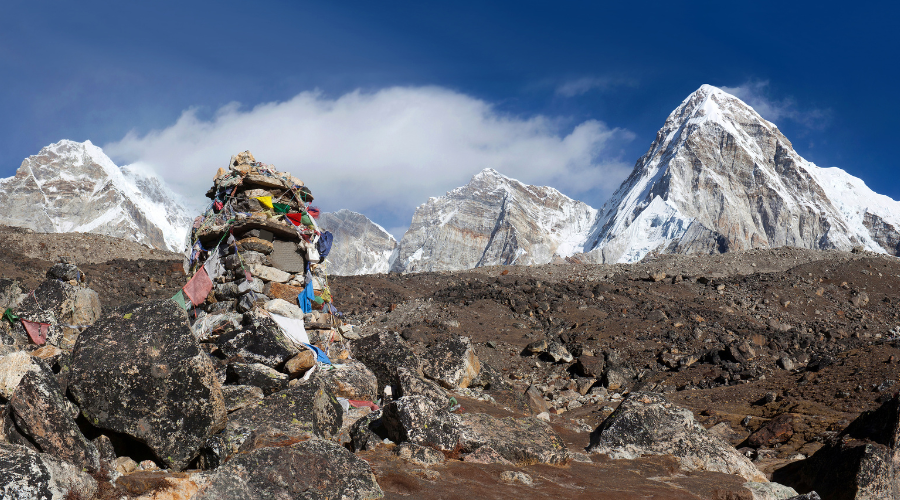
The route of the Three Pass trek starts from Lukla. The classic itinerary expands as follows: First, take a flight to Lukla and trek up to Phakding, trek to Namche Bazar and take a day for acclimatization here as you will gain quite an altitude the following day, trek to Thame, next day trek until you reach Lungden. The day after, you cross the very first high-altitude pass among the three, the Renjo La Pass, and stop trekking at Gokyo.
After a day of acclimatisation at Gokyo, trek moves to Thangak, now another high pass, Cho La Pass, greets you on your way to Dhzongla. You move further ahead to Lobuche and the next day to Dingboche via the Kongma La Pass, the last pass of the Three Pass trek. The trek is completed here, and the way back is made through Tengboche to Namche Bazar.
Note: If you do not want to fly to Lukla and are craving even more adventure than the Three Pass trek already offers, start the trek by taking a bus or Jeep to Jiri. Then, from Jiri, trek up to Lukla on foot.
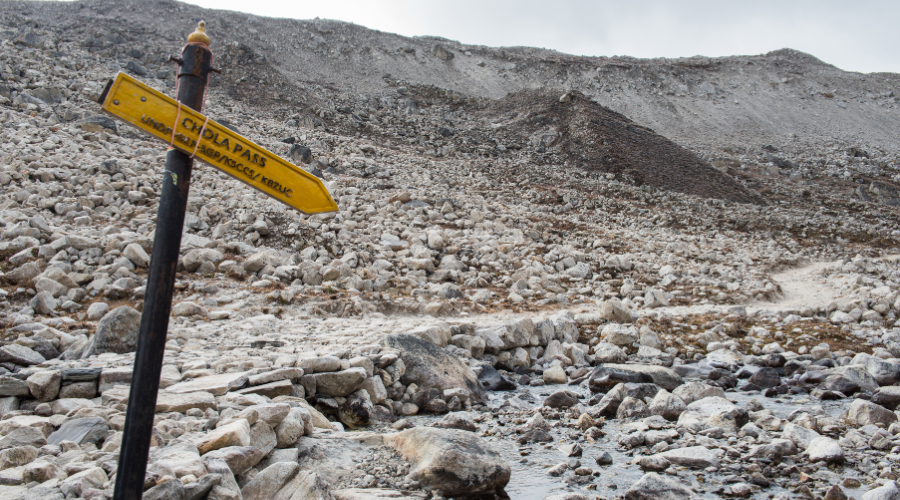
Food, accommodation guide in Nepal’s Three Pass Trek
The Everest Three-Pass Trek in Nepal predominantly features accommodations in teahouses, with a few lodges and luxury hotels situated around Lower regions. These teahouses generally offer rooms equipped with twin beds, shared bathroom facilities, and are furnished with warm blankets, pillows, and mattresses. It's important to note that each teahouse may have its own policy regarding the use of hot water, electricity for charging devices, and Wi-Fi access. While some include these services in the accommodation price, others might charge an additional $2 to $3 for device charging. To avoid surprises, it is advisable to inquire about these fees prior to booking your stay. On average, a night's stay in the Everest region's teahouses ranges from $3 to $5.
Throughout the Three Pass Trek, the traditional Nepali dish Dal Bhat and Tarkari (which includes steamed rice, lentils, and stir-fried vegetables) is readily available. While there are non-vegetarian options, sticking to vegetarian meals is often recommended during the trek. For breakfast, teahouses and hotels typically offer tea, coffee, roti (flatbread), alu chana (a dish made with potatoes and chickpeas), as well as bread with butter and jam, boiled eggs, and more. Lunch menus frequently feature dal bhat, along with noodles, shakpa(a Tibetan noodle soup), momo (Nepali dumplings), macaroni, and similar items. Dinner options again include dal bhat, roti, dumplings, garlic soup, among others. The cost for a full day's meals – breakfast, lunch, and dinner – is estimated to be between $25 and $40.
Here are some of the best and most affordable lodges around a few places on the Everest three-pass trek:
Namche Bazar:
-
Khumbu Lodge
-
Panorama Lodge
Tengboche:
-
Himalayan Lodge
-
Tengboche Lodge
Dingboche:
-
Good Luck Lodge
-
Himalayan Lodge
Lobuche:
-
Mother Earth Lodge
-
Oxygen Lodge
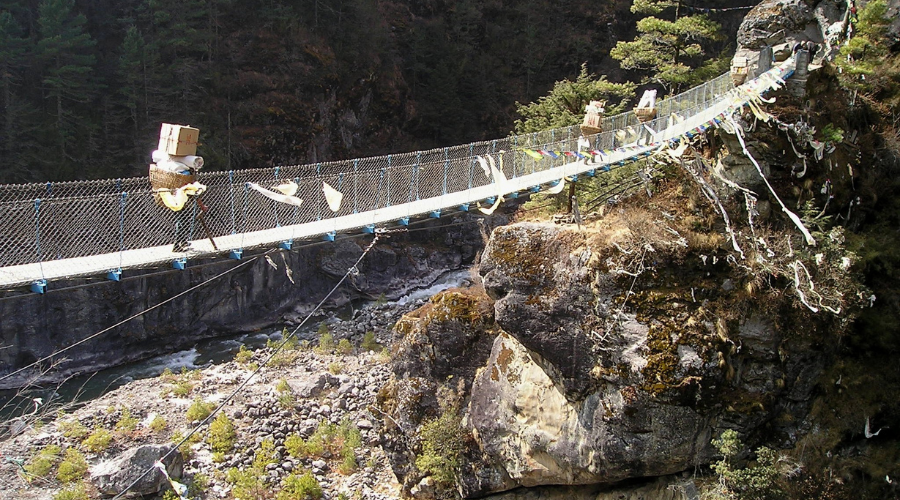
Considering the demanding nature of the trek, securing a guide can significantly enhance your experience. A guide not only simplifies navigation and accommodation logistics through their local contacts but also enriches your journey with insights into the history and spiritual significance of the areas you explore. Overall, employing a guide contributes to a safer and more informed trekking experience.
Porters primarily offer convenience by carrying your luggage. If you're comfortable managing your own gear, you might not need one. However, a practical solution for those seeking both guidance and assistance with their luggage is to hire a porter-guide. This individual combines the roles of a guide and a porter, offering logistical support and valuable insights throughout the trek.
Here is how much hiring guides and porters cost in the Everest region.
Hiring a guide:$25 - $35 per day
Hiring a porter: $20-$30 per day
Hiring a porter guide:$30-$40 per day
Note: This is just an approximation that the guide’s charges differ with their certification and qualifications.
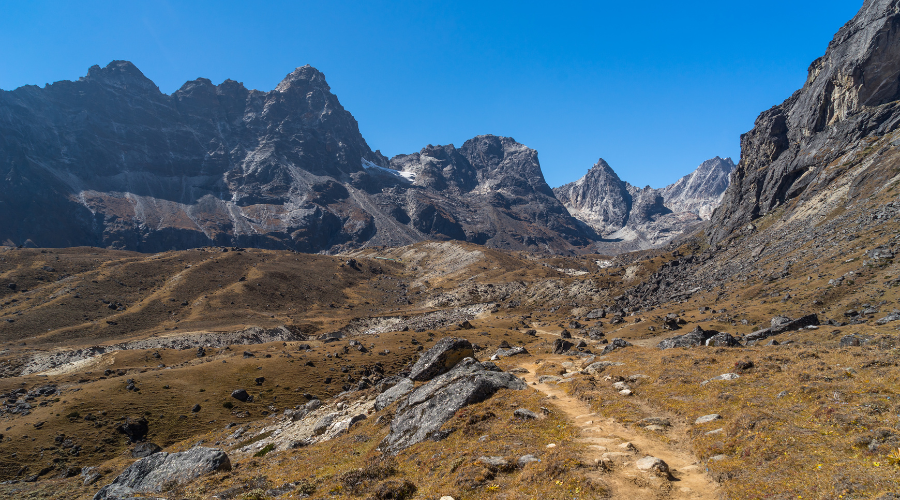
What permits are required for Nepal’s Everest three-pass trek?
-
TIMS / Khumbu Pashang Lhamu Rural Municipality Entrance permit: As of 2023, this permit costs NPR 2000 ( USD 15.14) for foreigners except for SAARC nationalities, and for SAARC nationalities, it costs NPR 1000 (USD 7.57).
-
Sagarmatha National Park entry permit: This permit costs NPR 3000 (USD 22.71) for foreigners, NPR 1500 (USD 11.35) for SAARC citizens, and NPR 100 for Nepalese.
-
Gaurishankar Conservation Area permit (required only if you are trekking through Jiri): costs NPR 3000 (USD 22.71) per person
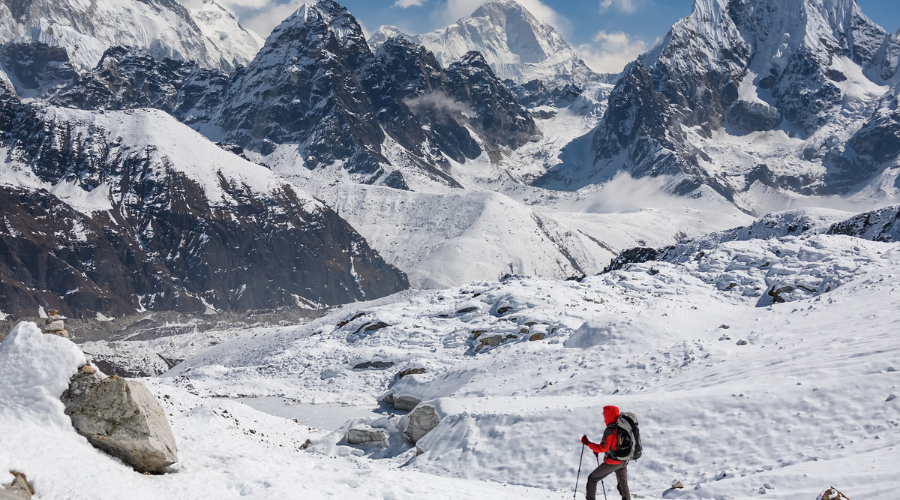
Highlights of the Everest Three pass trek
-
The first and most sought-after highlight of the three-pass trek is the thrill of crossing the three passes themselves, namely Kongma La Pass, Renjo La Pass, and Cho La Pass. The breathtaking sight of snow-capped mountains from the top of each pass is quite an experience in itself.
-
Stunning sights of the Gokyo Lakes and Gokyo Ri.
-
Visit the largest glacier of the Khumbu region, Ngozumpa Glacier, while trekking towards the Cho La pass.
-
Behold the sight of spellbinding Khumbu icefall.
-
You get to see the highest glacier in the entire world, the Khumbu Glacier.
-
Opportunity to explore Tengboche Monastery which is the largest Gompa of the Khumbu region.
-
Get to experience the warm hospitality of the local Shepra and get a taste of their simple lifestyle.
When should you go for the Everest three-pass trek?
While the trek can be done during any time of the year, considering the difficulty of the trek and the safety of the trekkers most suitable times are the Spring season and the Autumn season. The rainy season and winter season are not so ideal. The rainy season gets heavy rainfall and the winter season is freezing cold. Likewise, the rainy season is more prone to natural calamities like landslides, and floods, and the winter season has threats for snow storms and avalanches. Hence, it is best to avoid the rainy season and winter season.
During the Spring season and Autumn seasons other hand the weather is perfect it is neither too hot nor too cold making it perfect for long treks like the Everest three pass trek. The surrounding is decorated with flowers and trees and clear skies. As the weather is not at edge during these two seasons trails are in a better state and there are fewer chances of natural hazards. Here is a chart of the average temperature range of the Everest region in different seasons
|
Season |
Average temperature range |
|
Spring season |
18 degrees Celsius (64.4 degrees Fahrenheit) to -12 degrees Celsius (10.4 degrees Fahrenheit) |
|
Rainy season / Summer season |
27 degrees Celsius (80.6 degrees Fahrenheit) to 5 degrees Celsius (41 degrees Fahrenheit) |
|
Autumn season |
20 degrees Celsius (68 degrees Fahrenheit) to -3 degrees Celsius (26.6 degrees Fahrenheit) |
|
Winter season |
13 degrees Celsius (55.4 degrees Fahrenheit) to -15 degrees Celsius (5 degrees Fahrenheit) |
What to pack for Nepal’s Everest Three Pass trek?
-
Passport, permits, and other documents
-
Energy-giving snacks like protein bars or chocolates.
-
Water purifying tablets
-
Power banks, Headlamps, and navigation tools.
-
Carry some Nepali cash cause there are no ATMs in the mountains.
-
Supplies to protect you from sunburn, like sunscreen, hats, scarves, lip balms, polarised sunglasses, etc.
-
Trekking shoes with a tight grip, trekking sticks, pair of gloves, warm jackets, comfortable trousers, neck gaiter aka buff, etc.
-
For female travellers carry some menstrual supplies.
-
Have your toiletries like towels, wet wipes, toothbrushes, soap, hand sanitisers, etc.
-
A first aid kit with medicines to prevent altitude sickness like Acetazolamide / Diamox and medicine to cure altitude sickness like dexamethasone/nifedipine are needed.
-
Carry sleeping bags to keep you warm during the night so you get proper rest.
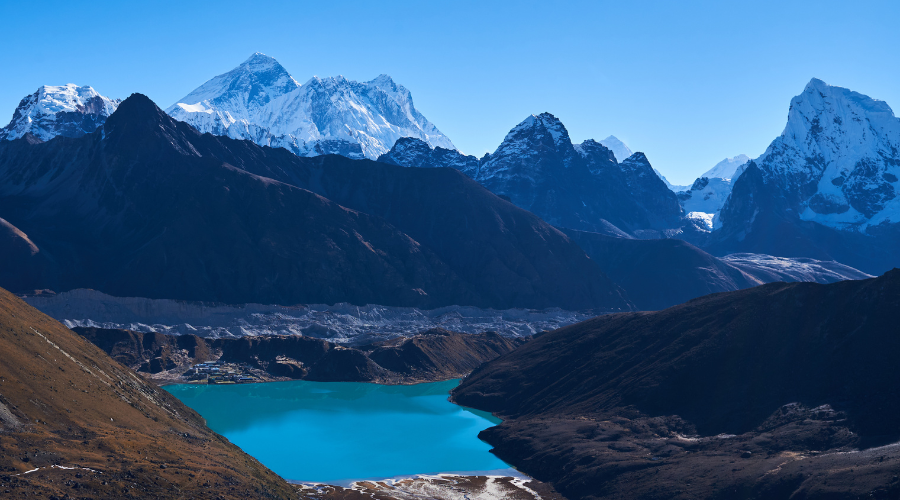
Some tips to ensure your safety while on the trail
-
Before starting the trek, prepare yourself physically and mentally. Engage in short hikes, go for a run every day, and take swimming lessons for your pulmonary health.
-
Avoid eating greasy and raw foods while you are on the trail. Only drink purified water.
-
Do not smoke or drink during the trek.
-
Have good travel insurance so you will be taken care of if something bad happens on the trail.
-
Always stay hydrated and give yourself a rough time for acclimatization before gaining altitude
-
Respect local culture and traditions.
-
Do not pollute the environment, harm local heritages and pilgrimage sites, bring back your waste with you if there are no trash cans around, and follow responsible trekking.
NEWSLETTER SIGNUP
Sign up to receive our trip ideas and travel offers!
Get updates and Exclusive Offers up to 20% Discount








